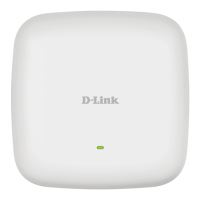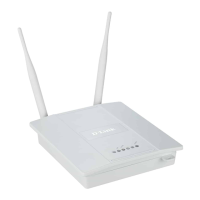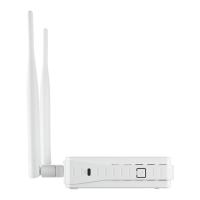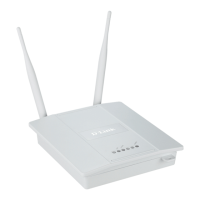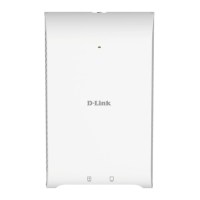30D-Link DAP-2230 User Manual
Section 3 - Conguration
Advanced Settings
Performance
*Maximum wireless signal rate derived from IEEE Standard 802.11n and 802.11g specications. Actual data throughput may vary. Network conditions and environmental factors,
including volume of network trac, building materials and construction, and network overhead can lower actual data throughout rate.
Wireless: Use the drop-down menu to turn the wireless function On or O.
Wireless
Mode:
The dierent combination of clients that can be supported include Mixed
802.11n, 802.11g and 802.11b, Mixed 802.11g and 802.11b and 802.11n
Only. Please note that when backwards compatibility is enabled for legacy
(802.11g/b) clients, degradation of 802.11n wireless performance is expected.
Data Rate*: Indicate the base transfer rate of wireless adapters on the wireless LAN.
The AP will adjust the base transfer rate depending on the base rate of the
connected device. If there are obstacles or interference, the AP will step down
the rate. This option is enabled in Mixed 802.11g and 802.11b mode. The
choices available are Best (Up to 54), 54, 48, 36, 24, 18, 12, 9, 6, 11, 5.5, 2 or 1.
Beacon
Interval (25-
500):
Beacons are packets sent by an access point to synchronize a
wireless network. Specify a value in milliseconds. The default (100) is
recommended. Setting a higher beacon interval can help to save the
power of wireless clients, while setting a lower one can help a wireless
client connect to an access point faster.
DTM
Interval
(1-15):
Select a Delivery Trac Indication Message setting between 1 and 15.
The default value is 1. DTIM is a countdown informing clients of the next
window for listening to broadcast and multicast messages.
Transmit
Power:
This setting determines the power level of the wireless transmission.
Transmitting power can be adjusted to eliminate overlapping of wireless
area coverage between two access points where interference is a major
concern. For example, if wireless coverage is intended for half of the area,
then select 50% as the option. Use the drop-down menu to select 100%,
50%, 25%, or 12.5%.

